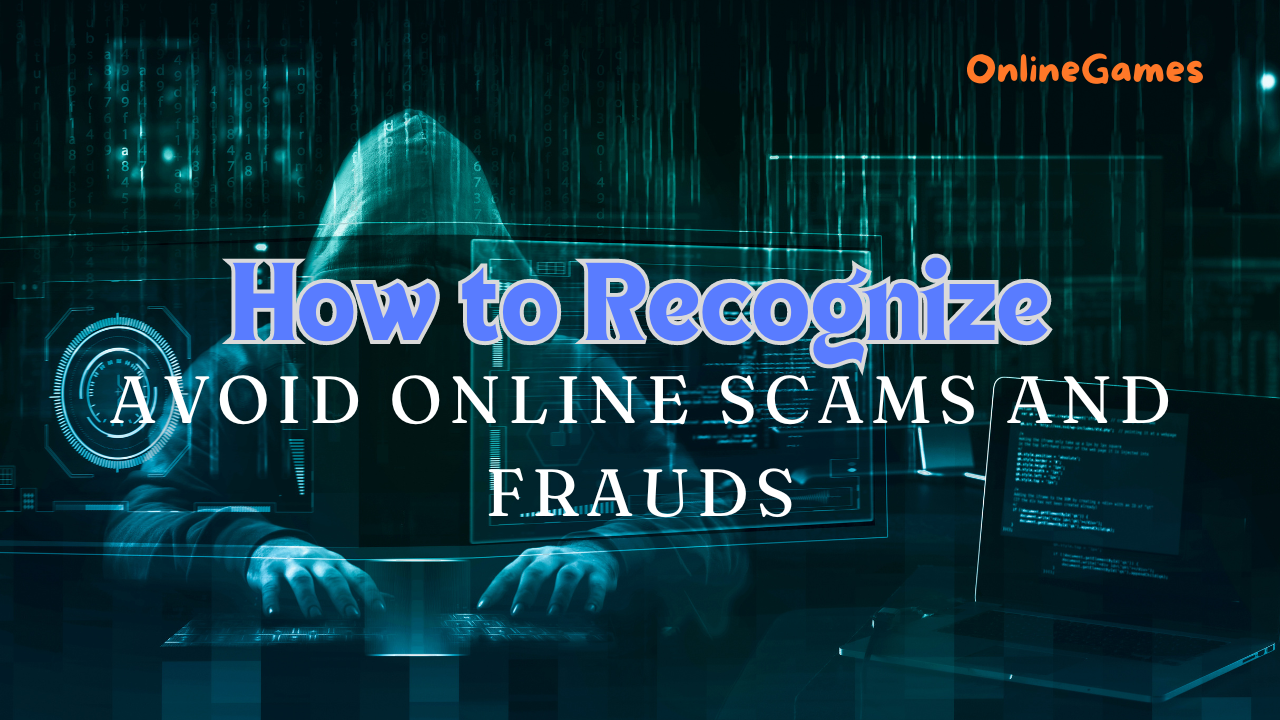In today’s digital age, the Internet offers a vast array of opportunities for communication, shopping, entertainment, and more. However, it also presents significant risks, including the ever-present threat of online scams and fraud. Scammers employ a variety of tactics to deceive unsuspecting individuals and steal their personal information, money, or both. Recognizing and avoiding these scams is crucial for safeguarding your financial well-being and personal security. This article provides a comprehensive guide on how to identify common online scams and the steps you can take to protect yourself.
Understanding Common Types of Online Scams
Phishing Scams
Phishing scams involve deceptive emails or websites designed to trick you into revealing sensitive information such as passwords, credit card numbers, or Social Security numbers. These scams often appear as legitimate communications from trusted organizations, like banks or online retailers.
Tips to Recognize Phishing Scams:
- Look for generic greetings such as “Dear Customer” instead of using your actual name.
- Check the sender’s email address for inconsistencies or misspellings.
- Be wary of urgent messages demanding immediate action or claiming suspicious activity on your account.
- Hover over links to see the actual URL before clicking. Phishing links often lead to websites that mimic legitimate sites.
Online Shopping Scams
Online shopping scams involve fraudulent websites or sellers that offer goods and services at attractive prices but never deliver the products. Scammers often create fake websites that look legitimate or advertise through social media and emails.
Tips to Recognize Online Shopping Scams:
- Check for secure connections: Ensure the website’s URL begins with “https://” and has a padlock icon.
- Research the seller: Look for reviews and ratings from other customers. Be cautious of too-good-to-be-true deals.
- Avoid unfamiliar sites: Stick to well-known retailers or verified platforms.
Tech Support Scams
Tech support scams involve fraudsters posing as legitimate tech support representatives. They claim that your computer has a virus or issue and offer to fix it for a fee or by gaining remote access to your device.
Tips to Recognize Tech Support Scams:
- Be suspicious of unsolicited calls or pop-ups warning about computer issues.
- Do not give control of your computer to anyone who contacts you unexpectedly.
- Verify the legitimacy of tech support by contacting the company directly using official contact details.
Romance Scams
Romance scams target individuals on dating sites or social media, where scammers create fake profiles to establish relationships. Once trust is built, they ask for money, often claiming to be in distress or need.
Tips to Recognize Romance Scams:
- Be cautious of people who express strong emotions quickly or who avoid meeting in person or via video chats.
- Watch for inconsistent stories or requests for money, especially if they claim to need it urgently.
- Conduct reverse image searches on profile photos to check if they appear on other websites with different names.
Investment and Ponzi Schemes
Investment scams promise high returns with little risk, often through stocks, real estate, or cryptocurrency. Ponzi schemes involve recruiting new investors to pay returns to earlier investors, rather than from profit earned.
Tips to Recognize Investment Scams:
- Be sceptical of guaranteed returns or claims of “no risk” investments.
- Research the investment opportunity and the company offering it thoroughly.
- Avoid pressure to act quickly and consult with a financial advisor before investing.
How to Protect Yourself from Online Scams
Be Cautious with Personal Information
Never share personal information such as Social Security numbers, bank details, or passwords through email or over the phone unless you are sure of the recipient’s legitimacy. Use strong and unique passwords for different accounts and change them regularly.
Use Security Software
Install reputable antivirus and anti-malware software on your devices. Keep your software updated to protect against the latest threats. Many security programs also offer features that can alert you to potential scams and phishing attempts.
Enable Multi-Factor Authentication (MFA)
Multi-factor authentication adds an extra layer of security by requiring you to verify your identity through a secondary method, such as a text message or authentication app. This makes it harder for scammers to access your accounts, even if they have your password.
Verify Before You Trust
Always verify the legitimacy of unexpected messages, calls, or websites. Contact organizations using verified phone numbers or emails found on their official websites, not from links or numbers provided in unsolicited communications.
Educate Yourself on Scams
Stay informed about the latest scam tactics. Government websites and consumer protection organizations often provide updates and resources on current scams. Knowledge is a powerful tool in preventing fraud.
Monitor Your Accounts Regularly
Frequently check your bank and credit card statements for unauthorized transactions. Report any suspicious activity to your bank or financial institution immediately. Consider setting up alerts for large transactions or changes to your account.
Use Secure Connections
Avoid using public Wi-Fi networks for financial transactions or accessing sensitive information. If you must use public Wi-Fi, use a VPN to encrypt your data and protect your privacy.
Steps to Take If You Fall Victim to a Scam
Report the Scam
Immediately report the scam to the relevant authorities, such as the Federal Trade Commission (FTC) in the U.S., or your country’s equivalent consumer protection agency. This helps prevent others from falling victim and aids in the investigation and prosecution of scammers.
Contact Your Bank or Credit Card Company
If you have provided financial information or lost money, contact your bank or credit card company. They can help block further fraudulent transactions and guide you on how to recover your funds.
Change Your Passwords
Change the passwords for any accounts that may have been compromised. Enable multi-factor authentication wherever possible to enhance security.
Monitor Your Credit
Check your credit reports for any unusual activity or new accounts you did not open. Consider placing a fraud alert or credit freeze to prevent scammers from opening accounts in your name.
Recognizing and avoiding online scams requires vigilance, education, and proactive measures. By staying informed about common scam tactics and taking steps to secure your personal information, you can protect yourself from falling victim to fraud. Stay cautious, trust your instincts, and always verify before you trust.










